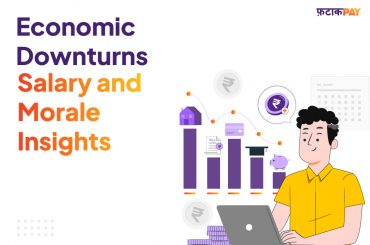Apart from the struggles of a dynamic business environment, an organization’s biggest struggle is in attracting and retaining top performing employees. With high competition in today’s world across industries, expanding organisations and mushrooming startups mushrooming with deep pockets and a willingness to pay high compensation, the demand for such talent is very high while supply is scarce. Additionally, if we draw a comparison from the previous generation of employees to the current one, there is a stark difference in their personalities, skills and expectations. Today’s workforce is better skilled and trained, aware of the current happenings, industry standards and well connected. Their expectations are way more than just a high pay package. They expect to work in a culture that is positive, transparent, and considerate of its employee’s work life balance & well-being. They value ownership and flexibility of work as well as a non-differential, non-hierarchical and an equal treatment, irrespective of caste, religion, gender, and experience.
The Human Resource departments of organizations in the current scenario are not just restricted to recruitment and payroll management. Their role has undergone a drastic transition, with the primary focus shifting to employee engagement and creating a good company culture that rates high on employee satisfaction. Every company has to transform the way they treat their employees and rethink their human resource policies. It is also critical for employers to recognize and reward employees who go out of their way and deliver value to the company, otherwise they start looking at alternative opportunities that offer them the value they deserve. Further, retaining an employee is more economical for a company than recruiting and training new talent. finding and recruiting new talent and training them. Let us look at some ways in which you can attract and retain the right talent.
1. Seamless application process: From a candidate’s perspective, the entire job hunting process can be long and tiring. At a certain point, he must be applying and interviewing at multiple companies. To invite applications from top candidates, companies should lay out clear and concise job descriptions that experienced candidates can relate to. It should also state a summary about the company’s culture, mission and vision. Further, organizations should work on making the recruitment cycle a short and quick one. They should provide the right and timely feedback to employees and should not keep them waiting or ghost them. A rejection should also be politely communicated with feedback that is helpful to them for further interviews.
2. Training and upskilling: When a new employee joins the organization, he is quite enthusiastic and comes with a fresh slate as there is a lot in store for him to learn and experience about the organization and the industry. However, after a certain level of experience in the organization and their careers, employees feel they have reached a plateau and don’t see a scope of further growth. Additionally, in this fast paced world, it is important for employees to keep learning new skills. Employers can provide financial assistance to their employees for education or introduce training programs for them to develop new skills. A mentorship program can also help them learn from the experience of the senior leadership team and take their guidance on the next phase of their career growth.
3. Rewards & Recognition: One of the biggest reasons for an employee to leave a company is because he doesn’t feel recognized for his achievements and contributions to the company. Overlooking an employee’s hard work and milestones achieved, not giving credit or giving credit to someone else is a grave mistake on an employer’s part. Encouragement, monetary and non-monetary rewards are the most tried and tested method of retaining employees.
4. Internal feedback and continuous improvement: The best way to learn about your human resource strategies and their success or failure is to take feedback from the employees themselves. Take their ideas on what they expect from you as an employer, what support they need and how current practices can be made better. Learn from your recruits about their experience with your onboarding process and if any improvements are suggested. Take referrals from current employees and work on continuously improving your employee engagement strategies.
Recruiting new talent and spending time in training needs a lot of money, time and effort. The time taken for employees to get settled can result in business opportunity loss that could have been avoided if existing employees were treated well. Rather than paying more money and looking for talent outside, look at your current employees and promote them if their performance has been consistent and exceptional. We at Fatakpay, aim to help companies retain their employees by providing a line of credit without an actual credit card and reduce their financial stress. This will help them become more productive and stop them from looking out for better opportunities just for incremental financial incentive. Without any burden on the employer to pay the employee’s overdue and zero burden of interest on the employee, it is a win-win situation for everyone.








1 Comment
Hello fatakpay.com owner, Your posts are always informative and up-to-date.